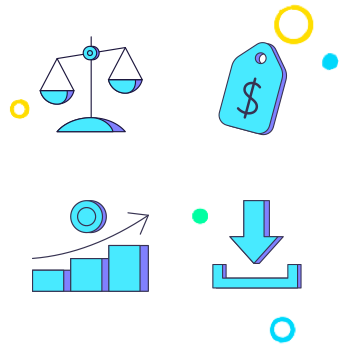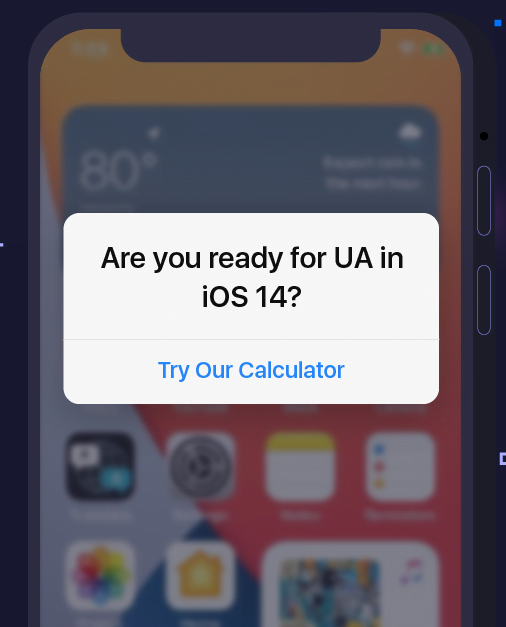Your source for everything mobile UA, from the basics to contentious standards, the glossary can help and inform both aspiring growth managers and experienced mobile app developers

Attribution
Retargeting in the Programmatic Ecosystem -> Page 1 of
Retargeting in the Programmatic Ecosystem

Retargeting in Mobile Marketing
Retargeting, also known as remarketing and re-engagement, refers to a marketing strategy in which advertising efforts are taken to reach existing inactive users. Users who installed and opened the app but have since been inactive.
There’s a tendency to differentiate between different retargeting audiences and the terms used to describe these campaigns. Some refer to re-engagement as targeting users who have never been significantly active in the app but have installed it and still have it installed on their device. A re-engagement campaign will focus on introducing the app, detailing the advantages, and promoting outstanding features in the app.
Retargeting, on the other hand, is referred to as campaigns targeting the most lucrative users and encouraging them to spend more. In e-commerce apps, it’s by offering them coupons and presenting them with items they’ve shown interest in (either being back in stock, on discount, or still available), while in gaming it’s by offering them in-game currency, experience points, and other incentives.
The Advantages of Retargeting
The Harsh Reality of Retention Rates
It can be argued that growth (i.e user acquisition) is more important than retargeting. Marketers may wonder why they should spend any more of their marketing budget on already existing users. The biggest argument for that would be in the following statistic:
“(Retention) rates remain low, reaching only 5.5% and 6.8% on day 30, for non-organic and organic respectively” – Jillian Gogel, Appsflyer
This means that most mobile apps lose over 90% of their users within 30 days of installing the app. Hence, the value of retargeting lies in bringing back already existing users rather than spending money on bringing new ones and losing 90% of them within 30 days.
Why Run a Retargeting Campaign
- User acquisition costs are rising – as the competition grows and targeting capabilities improve, CPI, and CPA costs increase. Re-engaging users that already showed intent and interest, on the other hand, is simpler and more cost-effective.
- Audience segmentation – since you have the ability to create audience segmentation, you can easily define different audiences and customize their campaigns.For instance, you can target recently inactive heavy spenders, encouraging them to come back and spend more by showing ads that specifically highlight new content or create a campaign targeting users who reached an advanced level in the payment\IAP funnel but did not complete a purchase, by showing them the benefits of making their initial purchase.
- Performance – according to data gathered by Appsflyer, apps that ran retargeting campaigns saw a 63% revenue uplift, which solidifies the whole ‘money on the table’ aspect of why you should consider running retargeting campaigns in most cases
Improve Your Overall Performance
“This is a marathon, not a sprint”
With the immense drop in retention by D30, marketers who want to sustain an active and engaged audience have to consider retargeting. There are virtually an infinite amount of users (it truly feels like it at times of growth), the potential to bring in new users to an app is huge, but if your monetization model is based, even partially, on in-app purchases, retargeting existing recently inactive users is a way to improve your overall performance metrics.
Maximizing UA efforts means bringing in new users to the app – both increasing ad revenue and IAP revenue and is overall a valiant effort but combining retargeting (while running UA campaigns) means investing in your app for the long haul. Focusing campaigns on users who are willing to spend money in the app (or reached far in the IAP funnel) almost guarantees they’ll do it again and these users (even if they only represent 5% of your overall uses) are vital to the app.
Retargeting for Gaming Apps
Retargeting is known to work best for any app that has a transaction base (shopping, food delivery, travel, and subscription-based apps) because your campaign reaches out to active users encouraging them to take a revenue-based action.
When it comes to gaming apps, many marketers still abstain from running retargeting campaigns since it’s not, in its most basic definition, transaction-based. Nonetheless, depending on the game and its monetization model, retargeting can still be a useful tool to increase revenue and improve overall performance.
Games that have a monetization model that’s based on both ad revenue and in-app purchases or games that are solely based on in-app purchases (such as most social casino or hard-core RPG games) should run a retargeting campaign while looking at events that lead to a purchase as an in-app transaction. This might sound obvious, but in practice, many publishers and developers are not engaging in this activity.
Keep in mind that a transaction in a gaming app is different from a purchase – since the product is in-game as opposed to food delivery or shopping and your segmentation should be adjusted accordingly.
When Should You Start Retargeting?
It used to be common to think that a marketer’s retargeting efforts should only begin once user acquisition efforts have been exceeded, but today more and more marketers understand that the two should be combined and dealt with simultaneously.
When it comes to maximizing marketing efforts, a holistic end-to-end approach, which takes into account a complete user’s journey, is realized as the most lucrative in the long run (improving the company’s bottom line KPIs). To achieve that, one must find the right partner – a DSP that is able to run UA and retargeting campaigns simultaneously and maximize your mobile marketing capabilities.
This does not mean retargeting users who have churned early (you can’t change users and turn them from inactive to purchasers, without significant changes in the app, as it’s apparent that they didn’t like what they saw, at least not enough) but combining aggregated campaigns’ data with overall performance benchmarks for the specific vertical and customizing an overall acquisition plan can truly affect the bottom line.
Combining UA and retargeting campaigns, targeting the correctly-segmented users (as mentioned beforehand – recently inactive with proven potential to bring in revenue), and setting realistic KPIs can be a game-changer, especially in apps where retargeting was not previously considered.
Incrementality and A/B Testing:
Deciding to run a retargeting campaign means deciding to invest money in existing users – whether they are organic or non-organic which obviously meaning you already spent resources to acquire them in the first place. For that reason, when running retargeting campaigns you have to make sure you’re spending it effectively, and not just on retaining users that would retain either way.
“Measuring retargeting is best done by looking at the incremental effect. There are so many things that might affect your users’ experience beside the retargeting ad – where they were acquired (maybe even organic), their stage within the app, their overall app experience – so make sure you isolate the retargeting effect” – Jillian Gogel, AppsFlyer
Incrementality, at its most basic, is the ability to measure if any actual change in performance is generated from paid marketing efforts. In order to measure the incremental effect of a retargeting campaign, you must compare it to an identical group (a ‘control group’) on which you make no paid marketing efforts. This means, that in order to measure the incremental effect, you first have to create two identical user groups (groups that are performing similarly) and define one as a remarketing group and the other as the control group.
Then, you run the campaign on the remarketing group and measure both groups’ performance. The difference in performance is the incremental effect created by retargeting efforts. If the retargeted group is yielding better results than the test group (after factoring in the cost of the campaign) then the retargeting campaign is working and continuing it should result in a revenue increase.
On the other hand, if the control group is outperforming or on par with the remarketing group then the campaign isn’t working and the source and cause for these results should be tracked and dealt with. The reasons vary and it can be anything from the creatives used in the campaign, the incentive offered to users, the costs of the campaign, or anything in between.
In conclusion, when running retargeting for your app, you should always test the incremental effect. When done properly, a retargeting campaign has a huge potential to increase revenue and improve overall performance.

